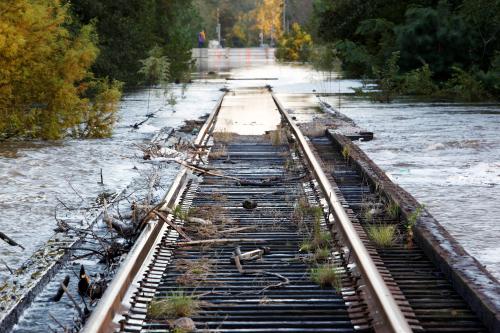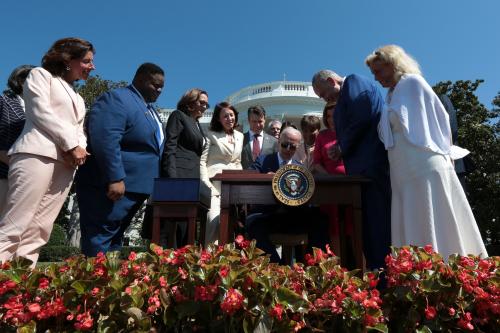As President-elect Donald Trump gets ready to enter the White House this week, his proposed $1 trillion infrastructure plan continues to draw national attention. While Wall Street has rallied around the idea of increased infrastructure investment, the signals emanating from Washington are more mixed. Many of the plan’s details are still unknown – from project selection to funding sources – and skepticism from Republican and Democratic leaders alike is beginning to drown out Trump’s earlier optimism.
One hotly-contested topic is how Trump’s infrastructure plan could impact the labor market. Some analysts see an influx of additional public or private investment holding promise for short-term job creation, particularly when it comes to construction. Skeptics, however, point to unclear direct and indirect effects on employment, including the ways in which contractors and prospective workers would stand to benefit in any potential projects.
Rather than focusing on hypothetical outcomes in the future, though, this much is clear in the current labor market: A huge boost in construction hiring seems unlikely.

First, there are simply fewer construction workers looking for jobs. Unlike President Obama’s initial months in office when the global economy was in a freefall, the unemployment rate for construction workers is now back near pre-recession levels. From a high of 20.6 percent in 2010, the construction unemployment rate has declined to 5.7 percent by the end of 2016. Although some metropolitan markets are facing a squeeze to hire more construction workers to keep up with demand, the temptation to overbuild remains a concern, and the need to train more skilled workers in this space is gaining more interest rather than onboarding as many new workers as possible.

Second, the number of construction job openings has gradually increased over the last few years and is now roughly on par with pre-recession levels, making it difficult to envision a sudden uptick in hundreds of thousands of new positions nationally. On an annual basis, job openings in construction have increased from a low of 615,000 in 2009 to nearly 2 million by the end of 2016, similar to totals not seen since 2007. Seasonal fluctuations, of course, can influence the number of job openings in construction throughout the year – with the summer months being especially important – but any new positions will likely be filled first by existing workers looking for more hours in the immediate term. In the more distant future, on the other hand, infrastructure projects may require attracting labor from other industry sectors and involve more extensive training efforts.

Finally, when considering construction workers directly involved in new infrastructure projects – namely those in heavy and civil engineering construction – employment has also reached a relative peak. On average, around 937,000 workers were employed in this industry in 2016, up from a low of 825,000 workers in 2010 and almost even with levels during the mid-2000s. Just as significant, the share of total national employment in this industry has remained fairly steady at 0.70 percent over the past decade and a half. Beyond residential and commercial construction, projects involved in highways, bridges, and utilities figure to attract the most attention under any potential Trump infrastructure proposal; however, seeing an uptick of hundreds of thousands of new workers in this industry would mark a significant departure from current trends.
While an increase in construction hiring is certainly possible with increased federal infrastructure investment, there is little slack in the construction industry at the moment, and it is difficult to envision a fundamental sea-change in the coming months. This has enormous consequences for the Trump proposal, especially if it aims to create revenue-neutral tax credits via greater income tax revenues. Instead, these three charts suggest that an immediate boost in employment and revenues may not be forthcoming and the plan could potentially add to the deficit. Just as infrastructure requires generational investments, so too does its workforce, and any new plans should take this extended time horizon into account.
Instead, to truly respond to the country’s infrastructure workforce challenge and create long-lasting economic opportunity, a more comprehensive approach will consider more than construction. By increasing wages, fostering more specific sets of skills, and developing expanded pipelines of talent, policymakers at all levels of government can help develop more durable infrastructure jobs.







Commentary
Trump, infrastructure, and jobs: Is construction hiring ready to take off?
January 18, 2017